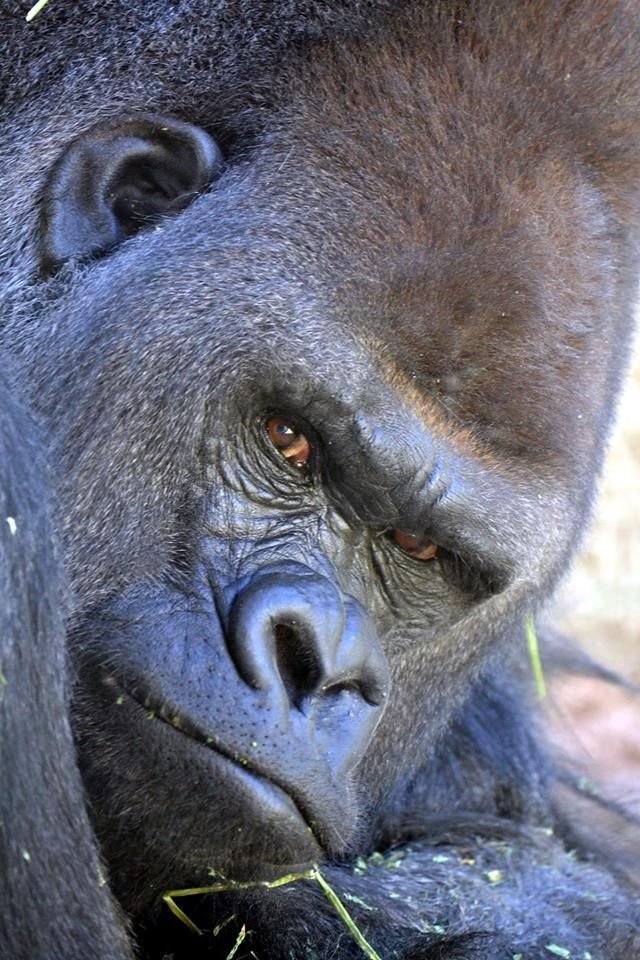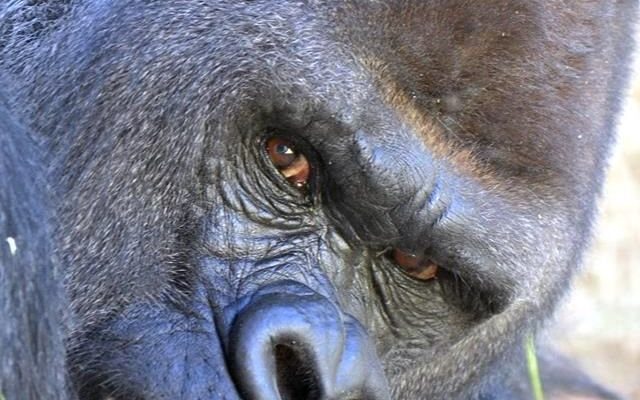
You might be wondering why it’s important to learn about these magnificent creatures. Understanding the Western Gorilla can help raise awareness about their conservation and the threats they face in the wild. Plus, knowing these quirky facts can help us appreciate just how unique they are. So grab a cup of coffee, and let’s explore the top 10 fascinating facts about the Western Gorilla.
1. Two Distinct Subspecies
The Western Gorilla is divided into two main subspecies: the Western Lowland Gorilla and the Cross River Gorilla. The Western Lowland Gorilla is the most common, found in several Central African countries like Cameroon, the Republic of Congo, and Gabon. These gorillas are typically smaller than their Eastern counterparts and have a lighter build, which makes them incredibly agile in their forest homes.
Now, the Cross River Gorilla is much rarer, with only about 200 individuals left in the wild. They inhabit a small range along the Nigeria-Cameroon border. Here’s the thing: their habitat is packed with challenges, like poaching and habitat destruction. This rarity adds to their charm but makes them a priority for conservation efforts. Think of them as the “rare collectibles” of the gorilla world.
2. A Complex Social Structure
Western Gorillas are known for their strong social bonds. They live in groups called troops, typically led by a dominant male known as a silverback. Silverbacks aren’t just tough guys; they play a crucial role in keeping the troop safe and harmonious. The troop usually consists of several females and their offspring, all of whom rely on each other for support and protection.
These troops operate like a close-knit family, where every member has a role to play. Females often take care of the young, teaching them how to forage for food and groom one another. Honestly, it’s heartwarming to see them snuggle or play together—much like we do with our own families. Their social interactions are fascinating to observe and reflect their emotional depth.
3. An Omnivorous Diet
You might be surprised to learn that Western Gorillas are omnivores. They primarily eat a plant-based diet, munching on leaves, fruits, and stems. However, they also occasionally consume insects, which adds a protein boost to their meals. Picture them foraging through the forest, plucking ripe fruit from branches or nibbling on delicious leaves.
Their diet varies with the seasons and the availability of food. For instance, during certain times of the year, fruit may be abundant, leading them to feast on berries and bananas. This adaptability helps them thrive in their natural habitat. Plus, they play a vital role in the ecosystem by dispersing seeds as they eat, which helps promote forest growth.
4. Strong Communication Skills
Western Gorillas are quite the chatterboxes—well, at least in their own way! They have a rich system of vocalizations, gestures, and facial expressions to communicate with one another. For example, they may grunt or hoot to express excitement or warnings. If you’ve ever tried to get your dog to understand you, you’ll appreciate how communication is critical for these intelligent animals.
They also use body language extensively. A silverback might stand tall, puff out his chest, or even beat his chest to assert dominance. This kind of behavior not only warns other gorillas but also entertains us humans when observed in the wild. It’s a reminder of how expressive animals can be and how much we still have to learn about their forms of communication.
5. Conservation Status and Threats
Sadly, the Western Gorilla is classified as critically endangered. Major threats include habitat destruction due to logging, agriculture, and mining. Additionally, poaching poses a significant risk, as gorillas are hunted for their meat or taken as pets. With only about 100,000 Western Lowland Gorillas left in the wild, every effort to protect them counts.
Conservation organizations are working hard to protect their habitats and ensure these magnificent creatures have a future. By supporting these initiatives, we can help make a difference. Understanding their plight can foster a sense of responsibility among us. We need to ask ourselves: what can we do to aid in their protection?
6. Unique Fingerprints
Each Western Gorilla has a distinct fingerprint, just like humans do. This uniqueness isn’t just a fun fact; it aids researchers in monitoring their populations. Scientists can identify individual gorillas through these fingerprints, which helps them study their behaviors and social interactions over time.
Imagine being able to identify your friends by the unique patterns on their fingers! This capability allows researchers to better understand the health and genetics of the population, which is crucial for conservation efforts. Knowing who’s who in the gorilla community is key to making smart decisions about protection and care.
7. Tool Use and Problem Solving
Here’s a fun tidbit: Western Gorillas are known to use tools! They might use sticks to help extract insects from tree bark or use leaves as sponges to soak up water. This ability to innovate is a sign of their intelligence and adaptability. It’s almost like watching a toddler figure out how to use a spoon for the first time.
Some researchers believe that their tool use indicates a level of cognitive function that we typically associate with humans and other highly intelligent animals. Observing these behaviors in the wild gives us insight into their problem-solving skills, showing just how clever they really are. It’s a reminder that even in the animal kingdom, ingenuity is key to survival.
8. Breeding and Lifespan
Western Gorillas have a slow reproduction rate. Females typically give birth to a single infant every four years. After a gestation period of about eight and a half months, a baby gorilla will enter the world, weighing around 4 to 5 pounds. Isn’t it amazing to think about how much care and attention goes into raising these little ones?
In the wild, Western Gorillas can live up to 35 years, but in captivity, they can live significantly longer—sometimes even reaching 50 years! Their longevity, coupled with their slow reproduction, makes declining populations a significant concern. It emphasizes the importance of conservation efforts to ensure these wonderful animals continue to thrive.
9. Remarkable Emotional Intelligence
If you think humans are the only ones capable of a range of emotions, think again! Western Gorillas exhibit behaviors that show they experience joy, sorrow, and even empathy. They’ve been observed comforting each other during distressing situations, much like how we approach a friend in need.
Their emotional intelligence not only endears them to researchers but also to those who have the opportunity to observe them in the wild. This emotional depth reminds us of the connections we share with animals and highlights the importance of protecting their habitats and lives.
10. A Cultural Icon
Lastly, the Western Gorilla has made its mark in popular culture. From movies like “King Kong” to documentaries showcasing their behavior, these creatures have captured the hearts of many. They serve as symbols of strength and resilience, inspiring conservation efforts worldwide.
It’s fascinating to see how a creature from the dense forests of Africa can resonate with so many people across the globe. Their representation in culture often raises awareness about their plight, encouraging conversations about conservation and how we can help protect their future.
As we wrap up, it’s clear that the Western Gorilla is more than just an impressive animal; it’s a complex, intelligent being worthy of our admiration and protection. By understanding their unique characteristics and the challenges they face, we can take meaningful steps toward ensuring their survival. So, the next time you think of Western Gorillas, remember the incredible journey they’ve made through evolution, and consider how we can support them in their ongoing story.

